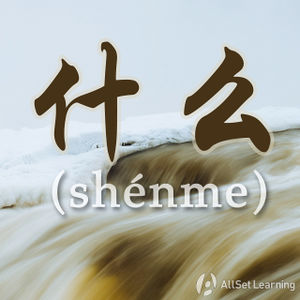Difference between revisions of "Challenging a verb with "shenme""
| Line 19: | Line 19: | ||
*这么 大 年纪 了,结 <em>什么</em> 婚啊! <span class="expl">The speaker is implying that getting married at this age is a ridiculous notion.</span> | *这么 大 年纪 了,结 <em>什么</em> 婚啊! <span class="expl">The speaker is implying that getting married at this age is a ridiculous notion.</span> | ||
| − | *道 <em>什么</em> 歉,又 不是 你 的 错。 <span class="expl"> | + | *道 <em>什么</em> 歉,又 不是 你 的 错。 <span class="expl">The speaker is implying that apologizing is completely unnecessary.</span> |
| − | *过 <em>什么</em> 年 啊,还 得 又 送 红包 又 送礼。 <span class="expl"> | + | *过 <em>什么</em> 年 啊,还 得 又 送 红包 又 送礼。 <span class="expl">The speaker is implying that celebrating Chinese New Year isn't economically feasible.</span> |
| − | *没有 钱 看 <em>什么</em> 电影。 <span class="expl"> | + | *没有 钱 看 <em>什么</em> 电影。 <span class="expl">The speaker is implying that there's no money to watch a movie.</span> |
| − | *还 吃 <em>什么</em> 饭,要 迟到 了。 <span class="expl"> | + | *还 吃 <em>什么</em> 饭,要 迟到 了。 <span class="expl">The speaker is implying that there's no time to eat.</span> |
</div> | </div> | ||
Revision as of 02:29, 3 July 2013
-
Level
-
Similar to
-
Used for
-
Keywords
Adding 什么 (shénme) to the end of a verb can be used to change a sentence into a rhetorical question. This usage is often used with separable verbs.
Structure
The most common structure you will see is:
Verb + 什么 + Object
Examples
This usage is best illustrated with examples:
- 这么 大 年纪 了,结 什么 婚啊! The speaker is implying that getting married at this age is a ridiculous notion.
- 道 什么 歉,又 不是 你 的 错。 The speaker is implying that apologizing is completely unnecessary.
- 过 什么 年 啊,还 得 又 送 红包 又 送礼。 The speaker is implying that celebrating Chinese New Year isn't economically feasible.
- 没有 钱 看 什么 电影。 The speaker is implying that there's no money to watch a movie.
- 还 吃 什么 饭,要 迟到 了。 The speaker is implying that there's no time to eat.
Note that the questions above would likely be between friends, or at least two people who are quite familiar with each other. Tone of voice and context is key.



